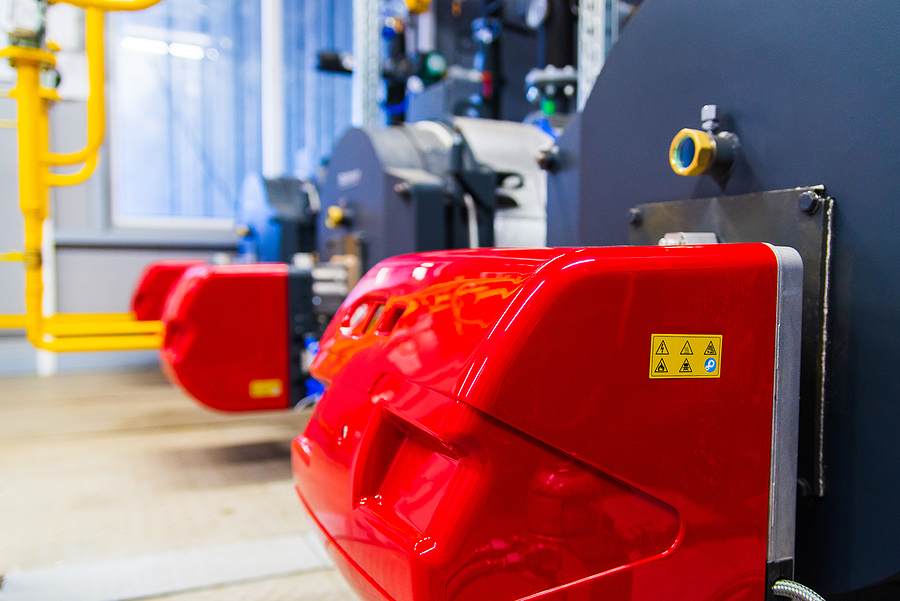
Boiler Storage
When the boiler is taken off-line and will not be in operation, it is important to follow proper lay-up procedures.
In normal boiler operation mode, corrosion and scale are prevented by the continuous addition of feedwater as well as the scale and corrosion and scale inhibitors it contains. When a boiler is operating, the water circulates through the boiler and mixes the water and chemistry throughout the entire boiler. Shutting down a boiler means that the flow of water stops, and the corrosion-inhibiting chemicals are no longer circulating. For this reason, boilers should not simply be turned off: They are shut down and stored according to proper lay-up procedures.
Wet Lay-Up Vs. Dry Lay-Up
Once a boiler is going to be shut down and not be in use, is should be properly cycled down and then a plan for layup should be determined. There are two ways to lay-up and offline boiler: wet and dry.
In a wet lay-up, or wet storage, the idle boiler is filled with chemically treated water. This flooded, sealed and chemically treated environment will inhibit corrosion. This is typically for shorter periods of non-operation. A boiler in wet layup can be brought back into service quickly
Dry lay-up, or dry storage, means emptying the idle boiler of all water and sealing it in a dry state. Often a hygroscopic material like silica gel or newer volatile corrosion inhibitors are placed in the boiler to discourage corrosion. Dry lay-up is appropriate for longer periods of disuse. Bringing it back on-line demands the boiler to be filled with water before it can be put into service.
Boiler Shutdown – Dry Lay-Up
Follow this sequence of actions to ensure a safe dry lay-up.
- Three to five days before a scheduled shutdown, increase the bottom blowdown rate by at least 50%. Increase both surface and bottom blowdowns.

- During this time, increase the sludge conditioner residual by 50% to maintain the proper residual in the boiler Maintain all other chemicals at normal residuals.
- During the last 24 hours before shutdown, increase bottom blowdown frequency, using short (5 to 10 second) blows every one to two hours, if possible.
- When the load is dropped from the boiler, cool it at the rate specified by the boiler manufacturer.
- Blowdown the water column, gauge glass and feedwater regulator while there is still pressure in the boiler.
- Continue frequent bottom blowdowns and refill boiler with deaerated feedwater. Maintain chemical residuals.
- Continue to blowdown and refill until the furnace is cool enough to enter. At this point, the boiler is cool enough to drain. If the boiler is drained too soon, it will bake remaining sludge on with residual heat.
- Open the boiler as soon as it is drained.
Boiler Shutdown – Wet Lay-Up
Perform this sequence of steps to ensure a safe wet lay-up.
- Fill the boiler to its normal operating level, preferably with deaerated feedwater.
- Fire the boiler to the point of making steam with the unit vented to the atmosphere to drive off dissolved oxygen.
- Add catalyzed sodium sulfite to achieve a residual of at least 100 ppm as SO3. Add sodium hydroxide (caustic soda) to establish a hydrate (OH-) alkalinity residual of 200 ppm.
- Before the boiler has cooled to the point of drawing a vacuum, completely fill it with deaerated feedwater.
The boiler should be fired weekly to create circulation. Chemical residuals should be tested for SO3 and OH- residuals. It is critical to circulate, test and chemicals as necessary to maintain the desired levels.
For start-up, drain the boiler to normal operating level. Resume normal feed of boiler treatment chemicals as soon as the boiler is placed back into service.
Extend Boiler Life with Proper Lay-Up
Caring properly for boiler while it is in operation is obvious. Caring for it properly when it is not running is less obvious, but equally critical to protect its life expectancy. A season of proper chemistry in the boiler can be undone by ignoring an offline boiler and allowing corrosion to take place.
Bringing them down from normal operations to storage conditions according to recommended procedure is equally important.
Chemtex can help you protect the life and function of your expensive and critical equipment. Any time you have questions about lay-up, storage, or bringing your boiler back on-line, we hope you will contact us at Chemtex. We are happy to help.



/NQA-ISO-9001-Logo-ANAB.jpg)